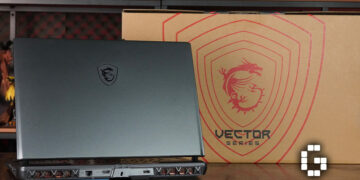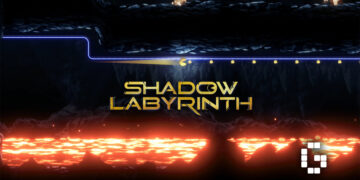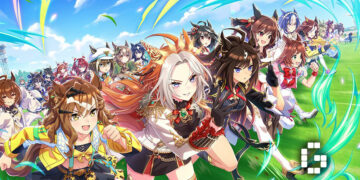Warhammer 40K Battlesector sits on an interesting precipice. Look, as a Warhammer 40k fan, my existence is pretty tenuous. Games Workshop has been pretty open about licensing their iconic Space Fantasy IP, with everything from mobile card games, tactics games to even 4X games.
At it’s core though, Warhammer 40K has been a tabletop wargame, where you build lists of armies (conveniently represented by Games Workshop’s fine line of plastic models, available at any Warhammer store), set up maps with terrain and do battle against each other.
Many games have attempted to recreate this feeling for videogames in the past, some of them really well- Battlefleet Gothic and Bloodbowl are amazing examples of carrying the spirit of boardgames into a PC game, all drenched in Warhammer flavor.
But with the existence of games like XCOM, Starcraft and other major players in the strategy genre, the base 40K experience has just never translated well to PC. After all, games like XCOM popularized the small squad fighting intense battles and failing 90% shots, whereas 40K’s never been that- it’s about things like Unit Coherency, and cockney fungus creatures overcoming a terrible to-hit roll by simply burying you in “dakka”.
With Warhammer 40K: Battlesector though, it looks like we’re finally moving towards that same feeling, with the closest game to emulate the 40K tabletop since the original Dawn of War.
Tabletop, Meet PC

The gameplay is laid out like nodes, which are mostly invisible until you’re moving your models. For the most part movement is pretty free- you’re not restrained to moving in 90-degree angles, being able to just cut across diagonally as the game calculates it based on your movement score.
I think the most clever thing that 40K Battlesector does is how it handles its dice rolls. Similar to Blood Bowl, the game does most of these dice rolls under the hood, only letting you see the damage numbers fly over every model’s head as they get shot at.

Your actions are split up between Movement and Action, with all of your units abilities being locked behind AP. Most units will only have 1 AP, so you’re going to want to choose each unit’s actions well.
If your unit’s not in range to hurt anything, you also have the Overwatch action, which lets you react to oncoming threats that cross a boundary of your choosing. Just like in the tabletop you’ll only really want to do this with units that have the liberty of chucking dice at your opponents, since you’ll still take the momentum penalty if you try to do this with a hero thanks to their larger Action Point limit.

Unlike the tabletop, however, moving and shooting aren’t locked to their own phases, and you can do them any way you want. In fact, you can even go back to activated units, having unit A move, then having Unit B follow it, before activating Unit A again to shoot.
It creates a really nice free flowing combat system, and prevents a lot of the frustrating moments from the tabletop or even games like Blood Bowl, where you accidentally forget to attack with your unit before moving on to the next one.
Just Nerdy Enough To Be Fun
Of course, the game also leverages being on PC to do some things that you can’t do on the tabletop. One of these is the Momentum System, where every model gets points for getting kills. When you cap out your Momentum, you get a Surge, where you can choose to either enhance one of your abilities or gain additional action points, letting you attack twice in a turn.
It’s a really cool system, but I find in regular skirmishes it rarely ever gets used just because of the fact that you lose units pretty easily. Still, that probably just comes down to skill, since many hero units have Momentum-boosting abilities to get you to Surge at least once per game.
Aside from that, there’s a lot of other really nerdy details I really appreciate, such as the focus on where your models are facing. While actions like charging your opponents gunline to get into melee usually warrant a counterattack, attacking them from their blind spot negates that entirely, and should be done whenever feasible.
There’s also the list building itself, one of my favorite parts of the 40K tabletop. Unlike games like, say, Starcraft, where you have to build a base to produce units, Battlesector sees you build your army before the game, with each unit costing points. Each mission has a points limit, so you’ll want to compose your various classes of units in a way that’s points efficient.

That being said, I appreciate that Warhammer 40k Battlesector didn’t get too nerdy with the details. Moving to PC means a lot of room to streamline the tabletop, and I’m really glad they did that with the discreet dice rolls. Line of sight also seems to be simplified as well, with the game just telling you if you can hit something through a wall or not.
I think the biggest gripe with these kinds of games is that people want to feel like they’re playing the tabletop, but don’t want a 1:1 experience. A lot of the slower parts of the 40K tabletop are consequences of its medium, not features and Warhammer 40K Battlesector understands that, making anything too draggy just go away while still focusing on what’s fun- managing your army as you destroy your enemies.
Factions
Part of the reason 40K has gotten as big as it has is its diverse roster of factions- from the space elf Eldar, to the space knight Space Marines to the ruinous forces of Chaos, there’s a faction for everyone.

Sadly, that’s not really the case with Battlesector. Warhammer 40K Battlesector only has two factions at launch, the Blood Angels Space Marines as well as the insectoid Tyranids. The developers have promised that more factions are coming down the line, via DLC, but even then this is a pretty weak lineup.
Basically all your skirmishes are going to either be mirror matches or Blood Angels vs Tyranids, which gets old pretty quickly. Worse still your factions don’t really have much in the way of multiple playstyles, since Tyranids are all about overrunning you with numbers and Space Marines are all about just being good.
Where Are The Cool Guys Though
Worse still, there’s an extra gripe with the Blood Angels. Now, for the most part, you’re hard-pressed to find any two Space Marine legions that look mostly the same. A lot of Space Marine Chapters have their own visual flair, and you can tell a lot of them apart at a glance, such as the Dark Angels having hoods, or the viking aesthetic of the Space Wolves.

Similarly, the Blood Angels have a pretty unique aesthetic, with units like the gorgeous Sanguinary Guard standing out in the armies. Despite not even baring the usual Blood Angels Red, for a lot of people (this reviewer included), they’re the iconic Blood Angels unit. Yet Battlesector is mostly focused on Space Marines that have a recently released model from Games Workshop, which means defaulting to the mostly boring Primaris units such as Intercessors.
This isn’t an issue for anyone who’s not already 6 feet in the Warhammer hole, but it is a valid complaint that they could have gone with something more visually striking, at least as a hero. For now it really just looks like the game was meant to be the default Ultramarines, but someone at the last second had the bright idea of making them Blood Angels instead. Worse still, the fact that they’re listed as the Blood Angels faction instead of Space Marines puts the severe fear that future DLC are going to just be other Space Marine Chapters, featuring re-skinned models.
Closing Thoughts

Gripes aside, I quite like Warhammer 40K: Battlesector. It’s got that kind of feeling where you can tell it came from the tabletop, but also leverages being a PC game well enough that the experience is actually enjoyable. It’s a deliciously nerdy game, and I say that with the utmost affection for it.
Should you get it? Only if you like the Blood Angels or Tyranids. The developers haven’t given a concrete roadmap on DLC, so if you’re not a fan of either of these factions there’s very little staying power to the game. The campaign’s kind of just there because it has to be, and it’s really hard to care about the skirmish mode if you’re the type of person who just wishes they had Crisis Suits or something.
Still though, as a Warhammer 40K game, it’s up there as one of the best. Just give it a bit of time to build a Bloodbowl-level roster, and you should see one of the best online Warhammer experiences around.
Join Us!
We are recruiting! If you want to break into the gaming media industry, don't miss out on the golden opportunity. Find out more: Malaysia. Overseas.Featured Video
The Review
PROS
- Feels like a tabletop
- The models look great
- Lots of nerdy details like unit facing and screaming Blood Angels
CONS
- Severe lack of content- two factions isn't enough
- Missing some cool units from the factions that are in the game













![[EXCLUSIVE] Creative Masterminds from Gearbox Software Reveal What Makes Borderlands 4 Worth the Wait](https://cdn.gamerbraves.com/2025/07/Borderlands-4-at-Bilibili-World-2025_Interview_FI-360x180.jpg)




![[ASIA EXCLUSIVE] Bringing Back a Classic: Inside the Making of FINAL FANTASY TACTICS – The Ivalice Chronicles](https://cdn.gamerbraves.com/2025/06/FFT-Ivalice-Chronicles_Interview_FI2-360x180.jpg)












